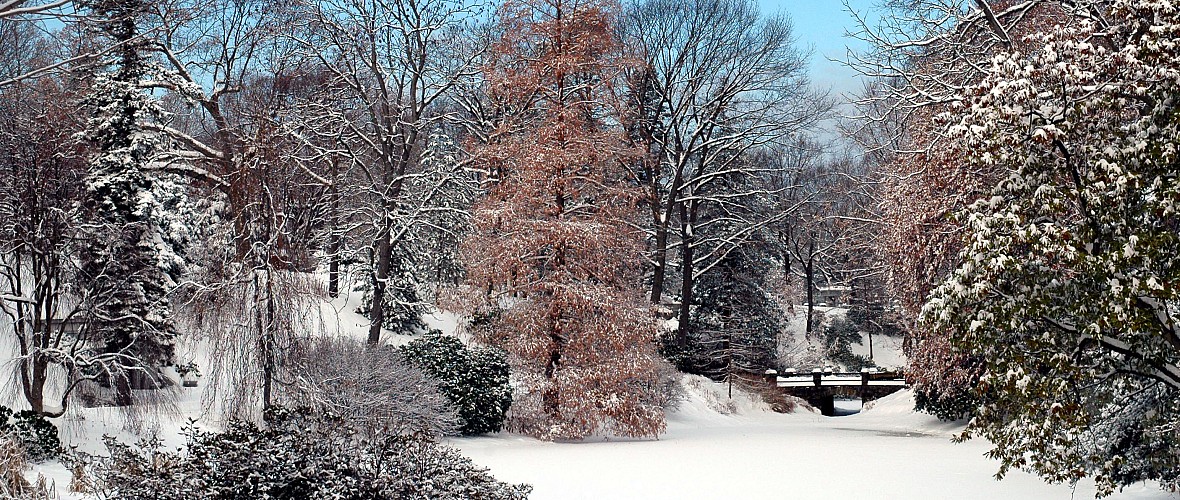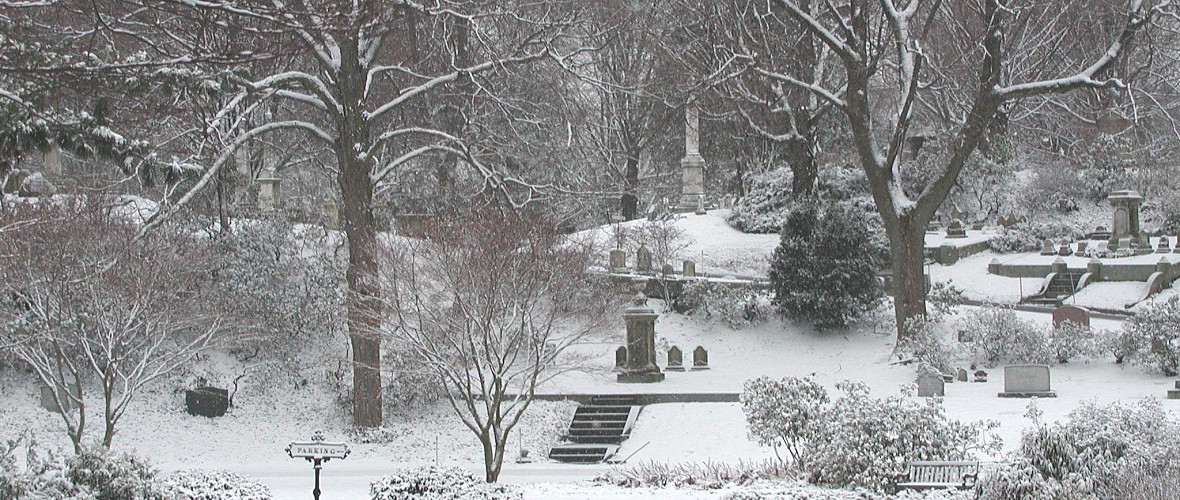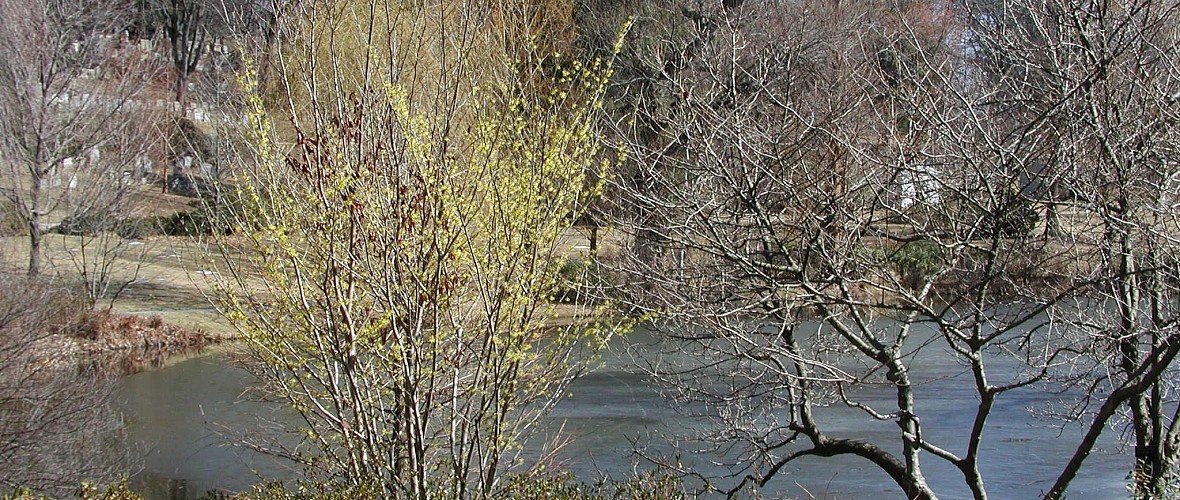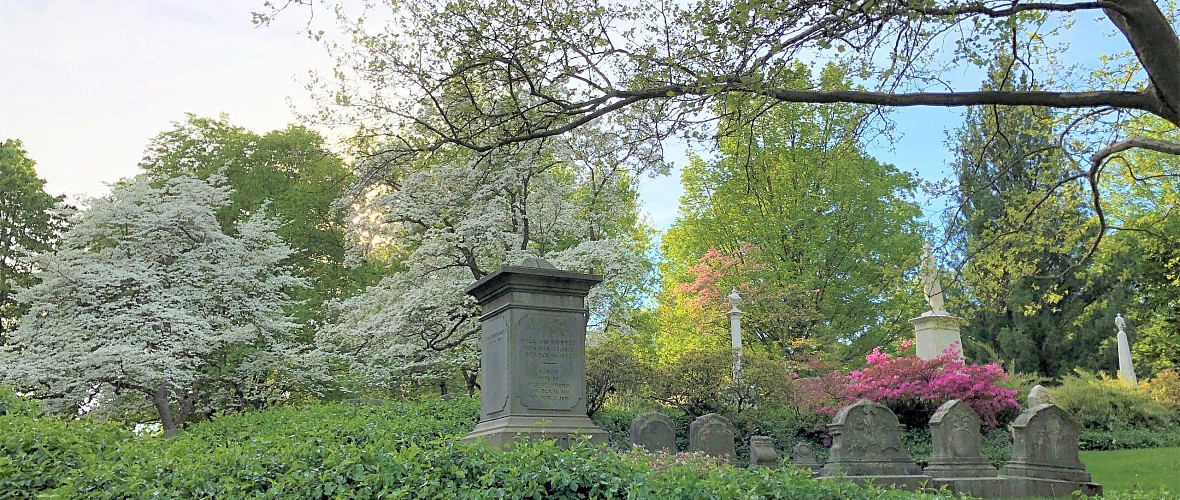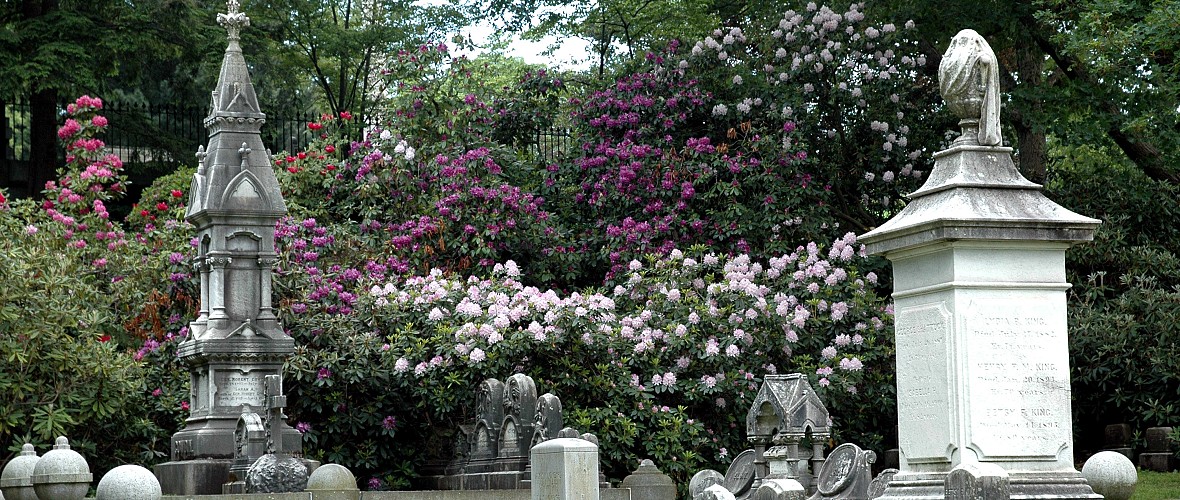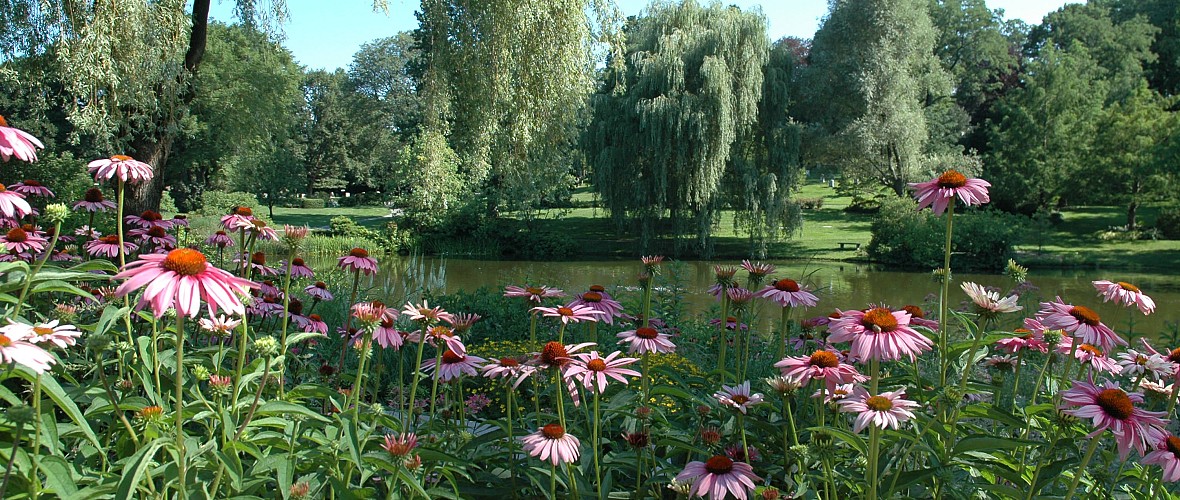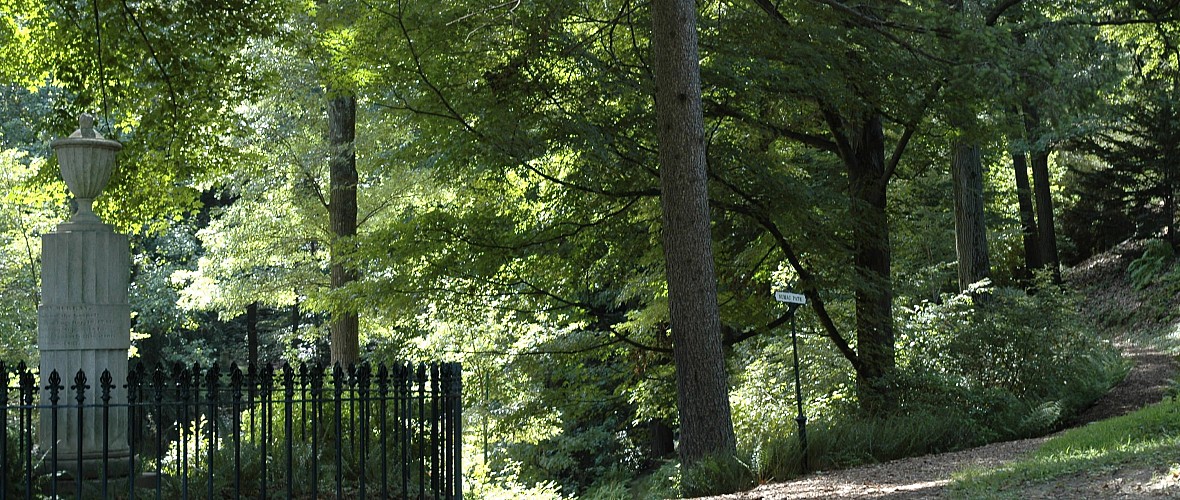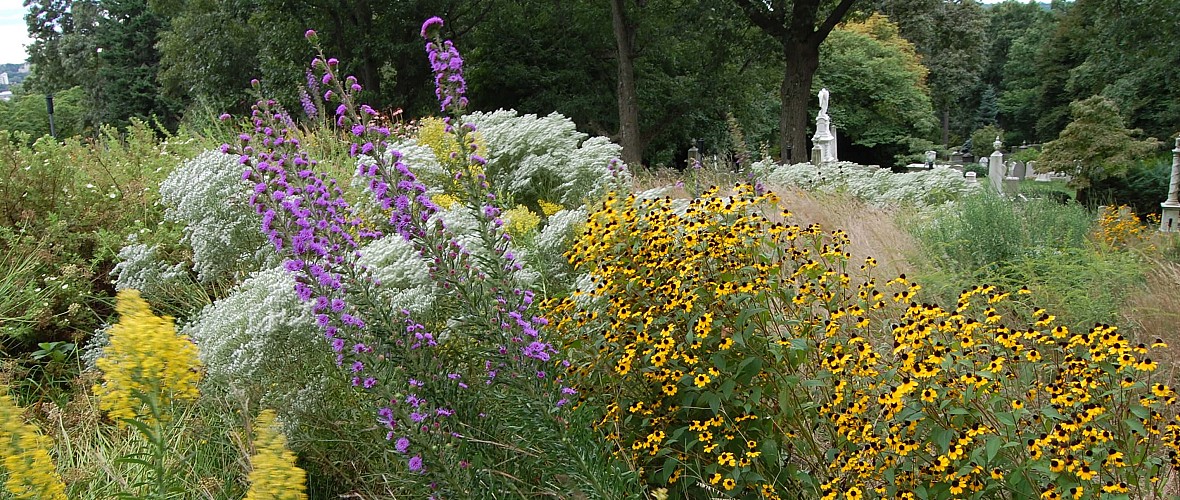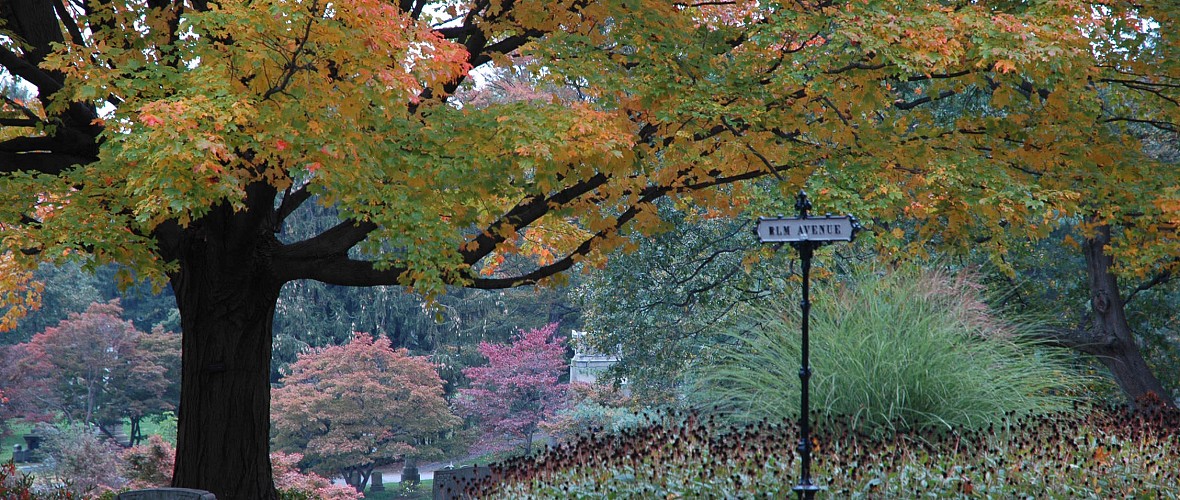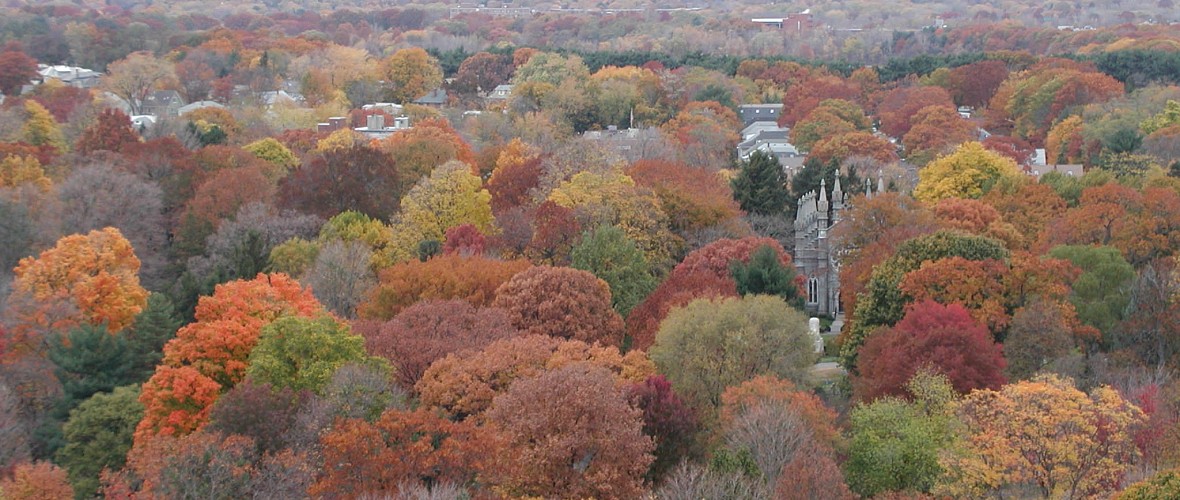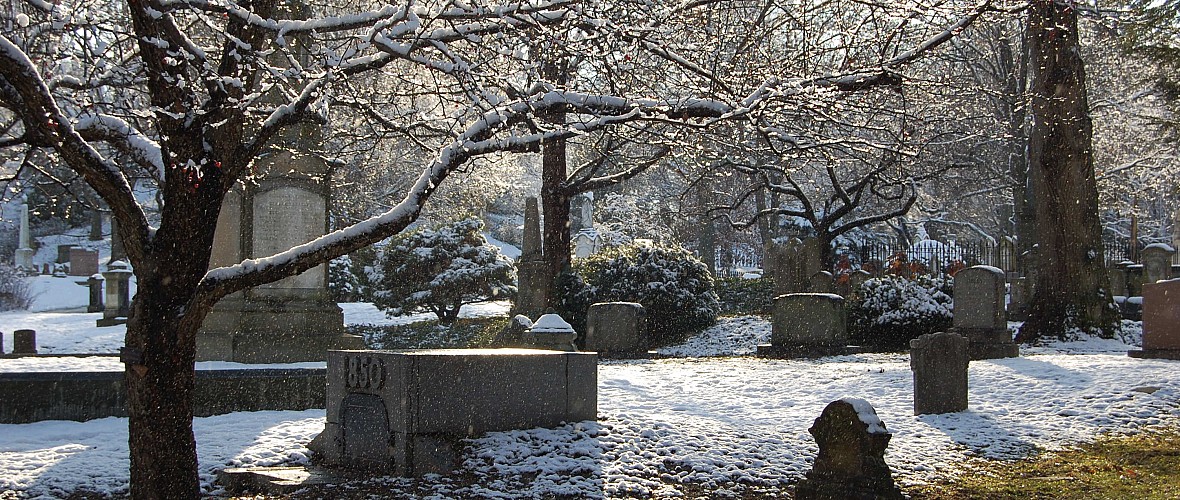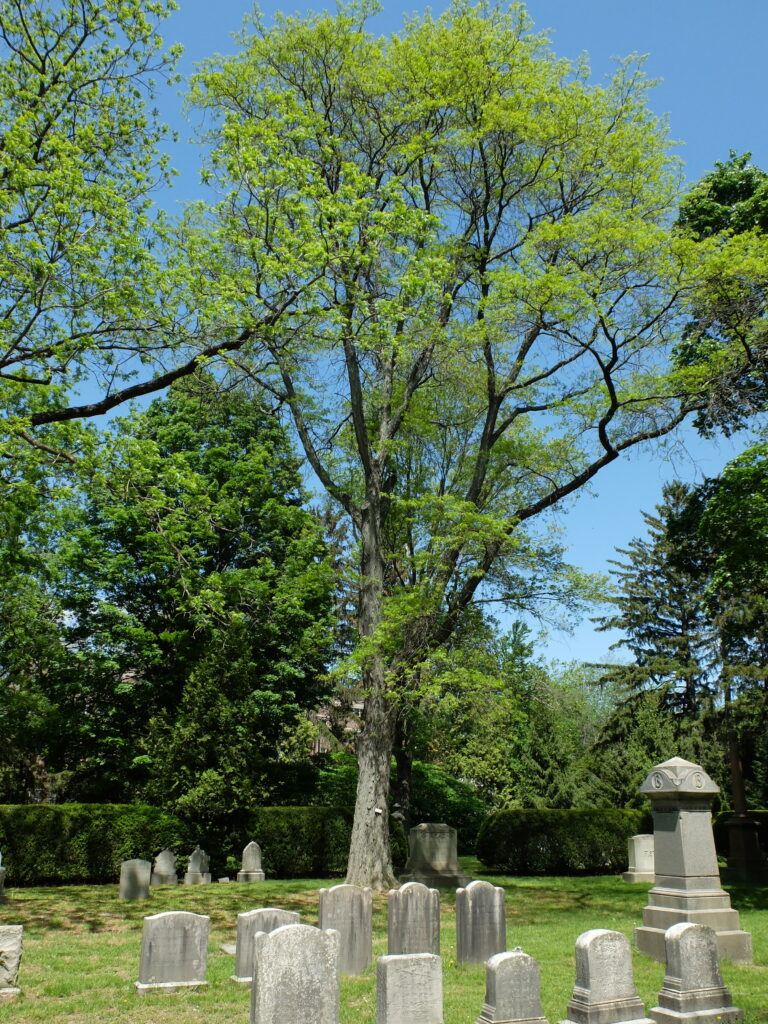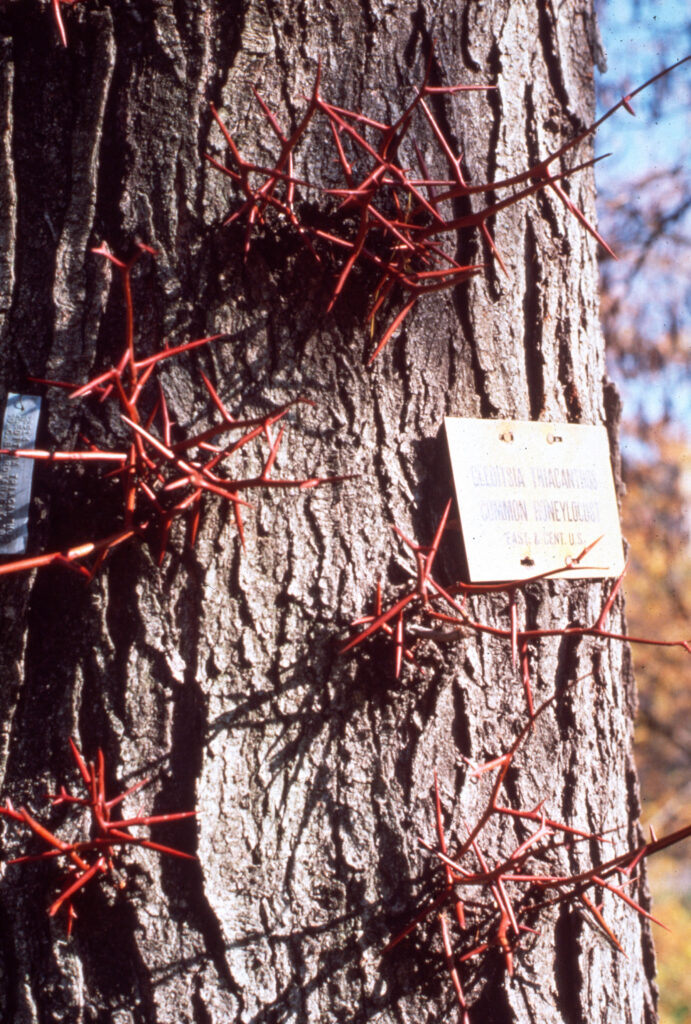Horticulture Highlight: Honeylocust
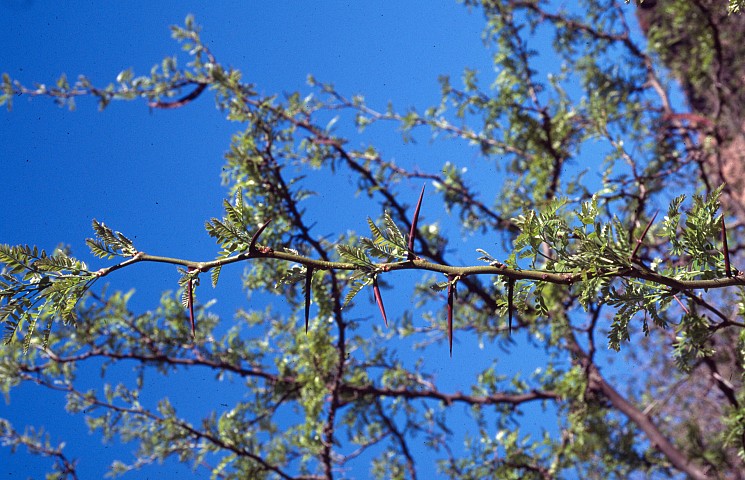
Horticulture Highlight: Honeylocust, Gleditsia triacanthos
…transposing
such forms as can extend the flawed earth
and embody us, intact, unaltering, among
the soft surprising trees of childhood,
mimosa, honey locust, willow…
-Ellen Bryant Voigt
During a week-end long Arbor Day celebration, tours throughout our landscape visited our Massachusetts “Champion Trees”. There exist lists designating what are the biggest individuals by tree species, in the nation, state, county/city or perhaps even neighborhood. With a standardized point system, three measurements of tree height, trunk circumference and tree canopy help to determine what is a biggest individual. Near our entrance is the Massachusetts champion Honeylocust, Gleditsia triacanthos, planted in 1939 and measured at a height of 74.5-feet and 105-inches in trunk circumference.
Honeylocust, Gleditsia triacanthos is a large, tough, fast-growing, deciduous tree, with a wide spreading canopy. The Latin name honors Johann Gottlieb Gleditsch (1714-1786), German physician, botanist and director of the Berlin Botanic Garden. This small genus of a dozen different species is within the FABACEAE, the pea family, the third largest terrestrial family (after ORCHIDACEAE and ASTERACEAE) comprising 670 genera and 20,000 species. We reviewed botanical cousins within this family including redbud, yellowwood, wisteria and silktree. This family also includes soybean, common bean, lima bean, chick pea, peanut and carob to mention some of agricultural importance.
In forest virginity, this is a midwestern tree ranging from Pennsylvania to southern Minnesota and South Dakota south to Nebraska, Texas and Alabama. Extensively planted it has become widely naturalized outside of its original range. Its alternate leaves are 6 to 15” long, pinnate or bipinnately compound, with its many fine textured leaflets casting a dappled shade.
…If you were a painter, you’d paint the wind
green. It would shake the boughs of the honey locust trees.
It would chase the leaves across the continent…
-David Lehman
In late spring they produce inconspicuous, greenish-yellow, mostly unisexual male and female flowers on different trees, although some trees may also contain flowers of the opposite gender (polygamo-dioecious). If successfully fertilized, the fruit maturing in early autumn, is a 7 to 18” -long pod, containing numerous oval, hard, shiny dark brown seeds. These pods contain a sugar-rich pulp that has been eaten, even used as a sugar substitute, hence the common name honeylocust. Often these pods become irregularly twisted.
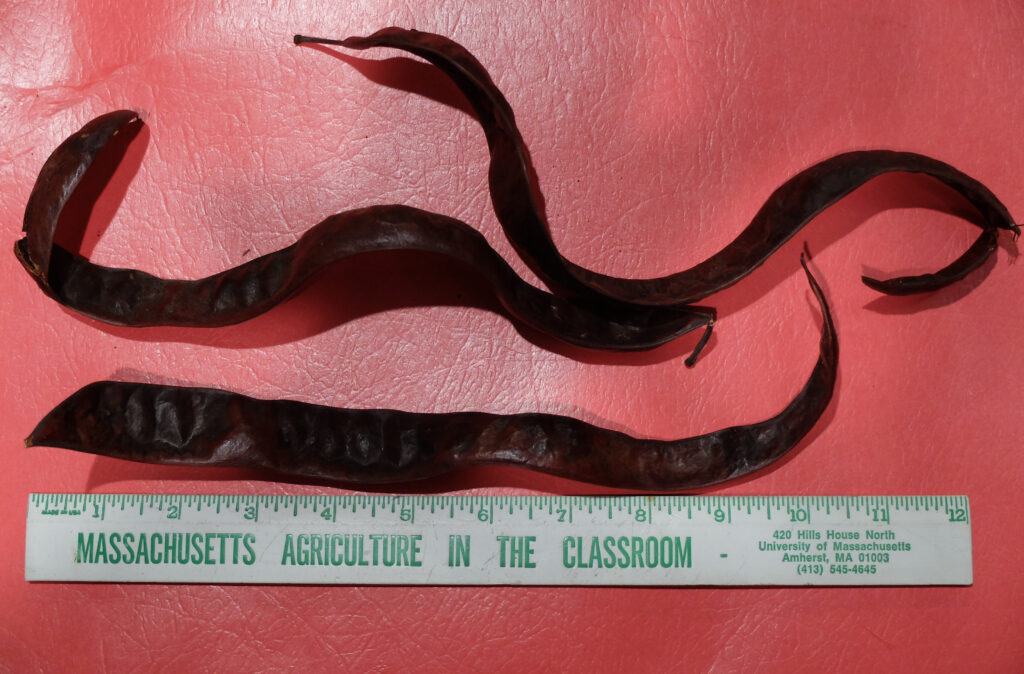
…what else but to linger in the slight shade of those sapling branches
yearning for that vernal beau. for don’t birds covet the seeds of the
honey locust…
-D. A. Powell
The species name triacanthos, alludes to bunches of thorns growing on the trunk and larger branches of wild populations. These remarkable triple-branched thorns arise from the tree’s wood and cannot be easily removed. Fortunately, thornless forms have been found. Gleditsia triacanthos var. inermis (unarmed) are the source of most of our and commercially available honeylocust trees.
On a future visit to Mount Auburn look for some of our score of Honeylocust, Gleditsia triacanthos at our main entrance, Gerardia Path, Spruce Avenue, Cedar Avenue, Spelman Road, Field Road, Willow Pond Path, Begonia Path, Dogwood Path, Sorrel Path and Petunia Path among other locations.
…a factory of blue jays
in honey locust leaves…
-Yusef Komunyakaa
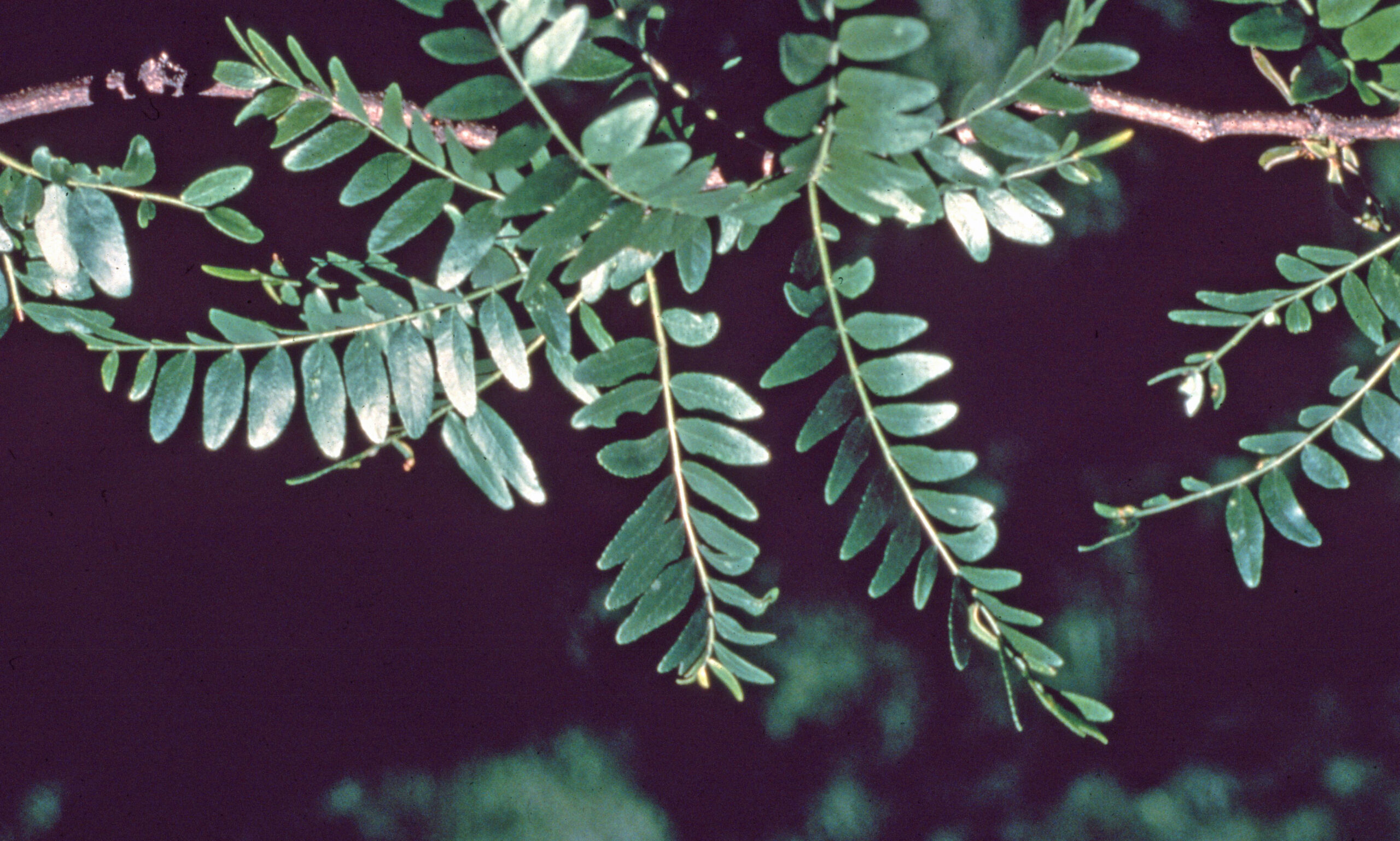
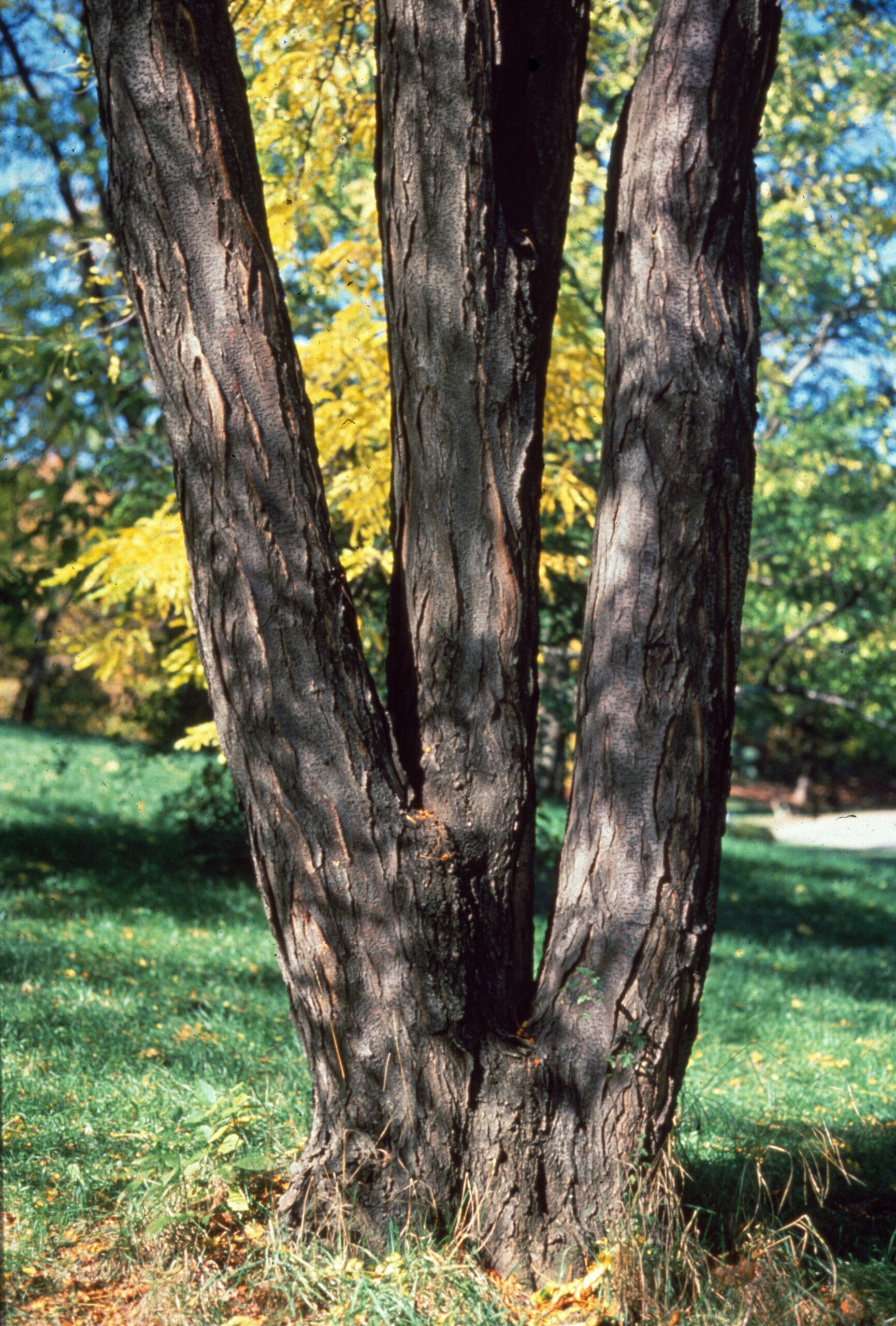
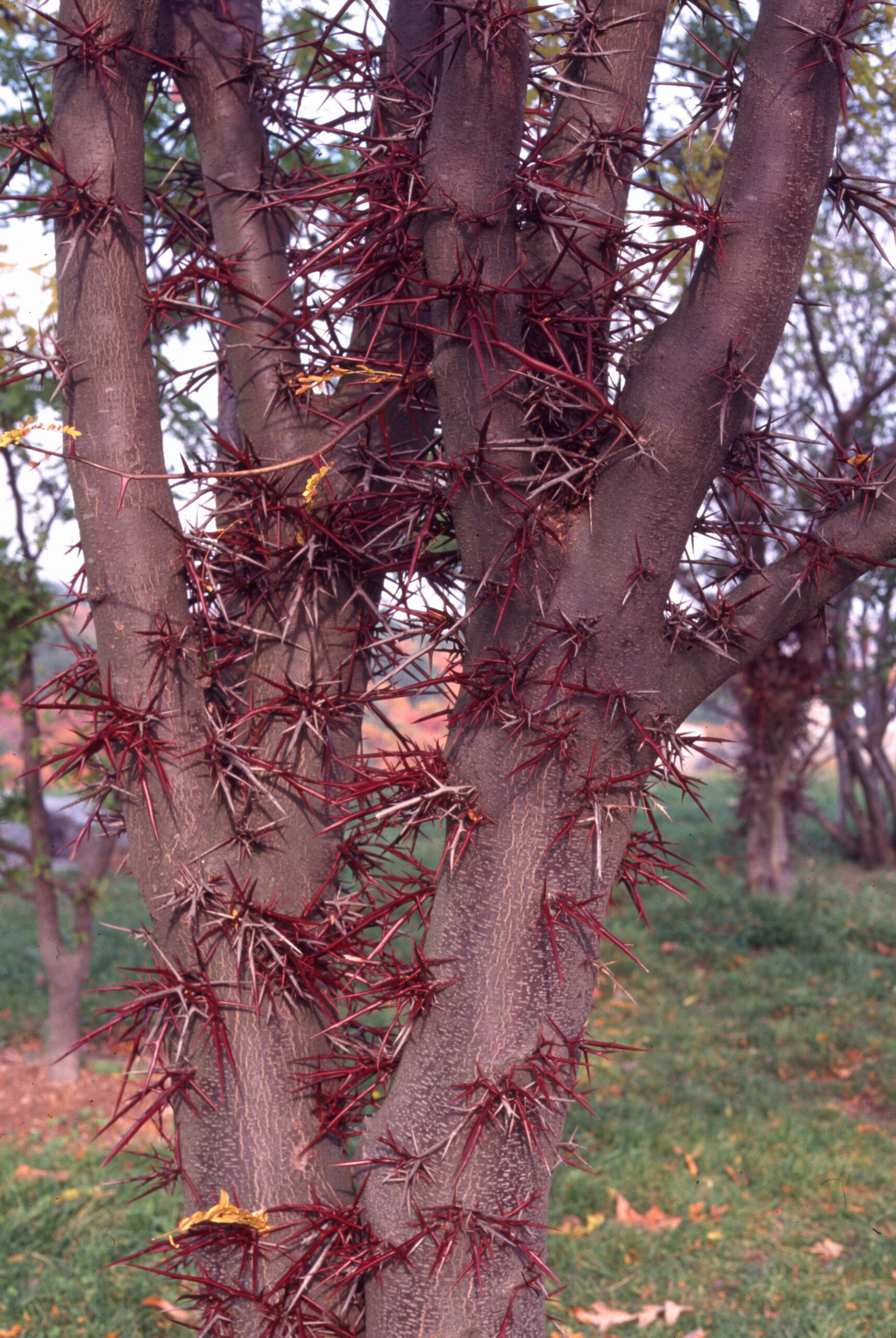
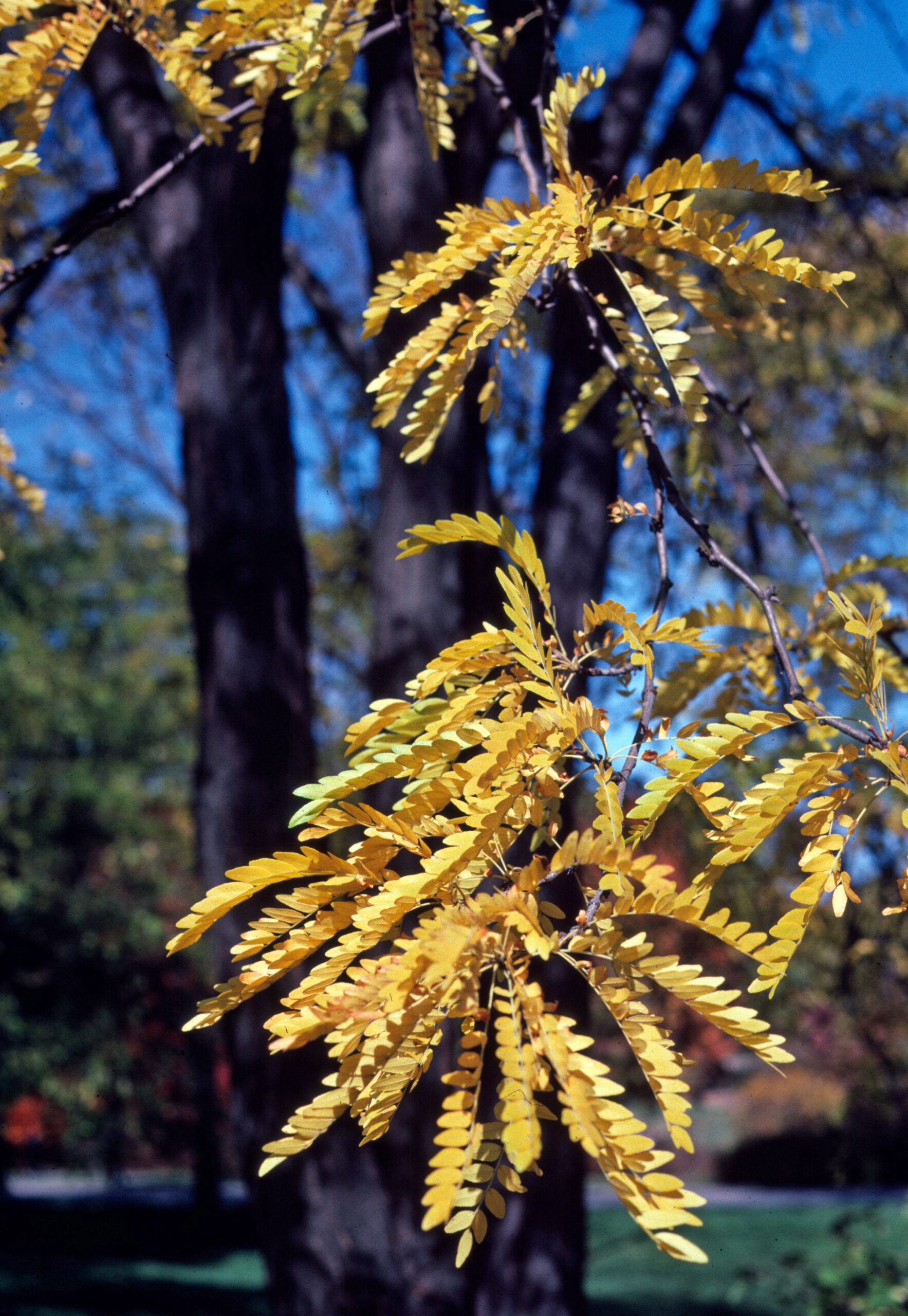
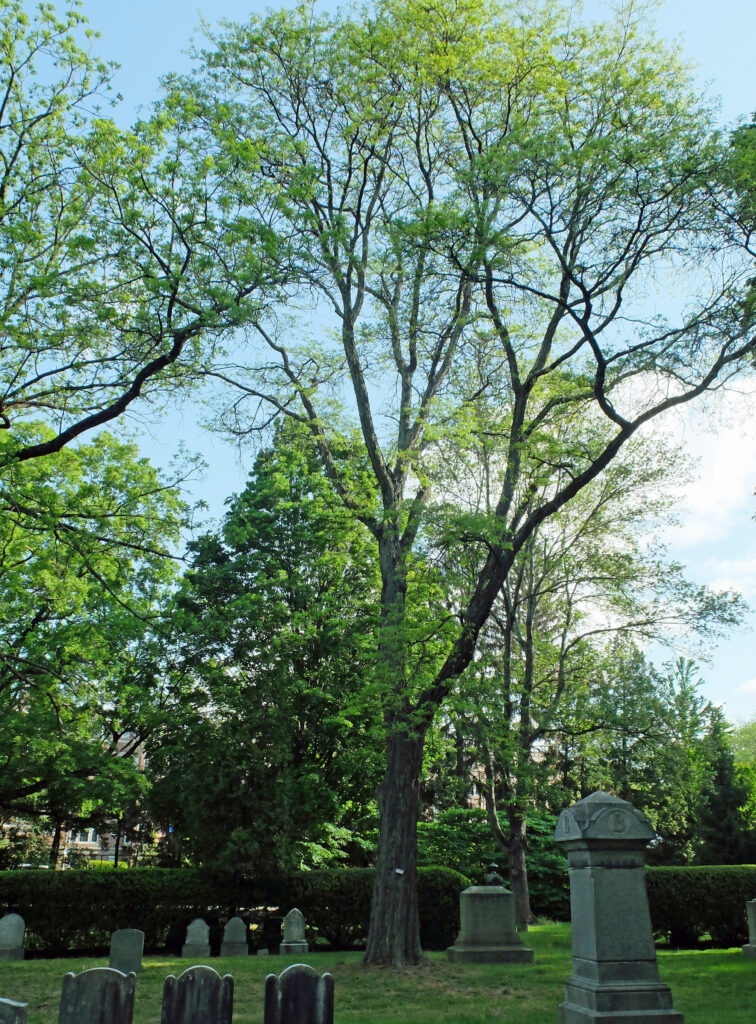


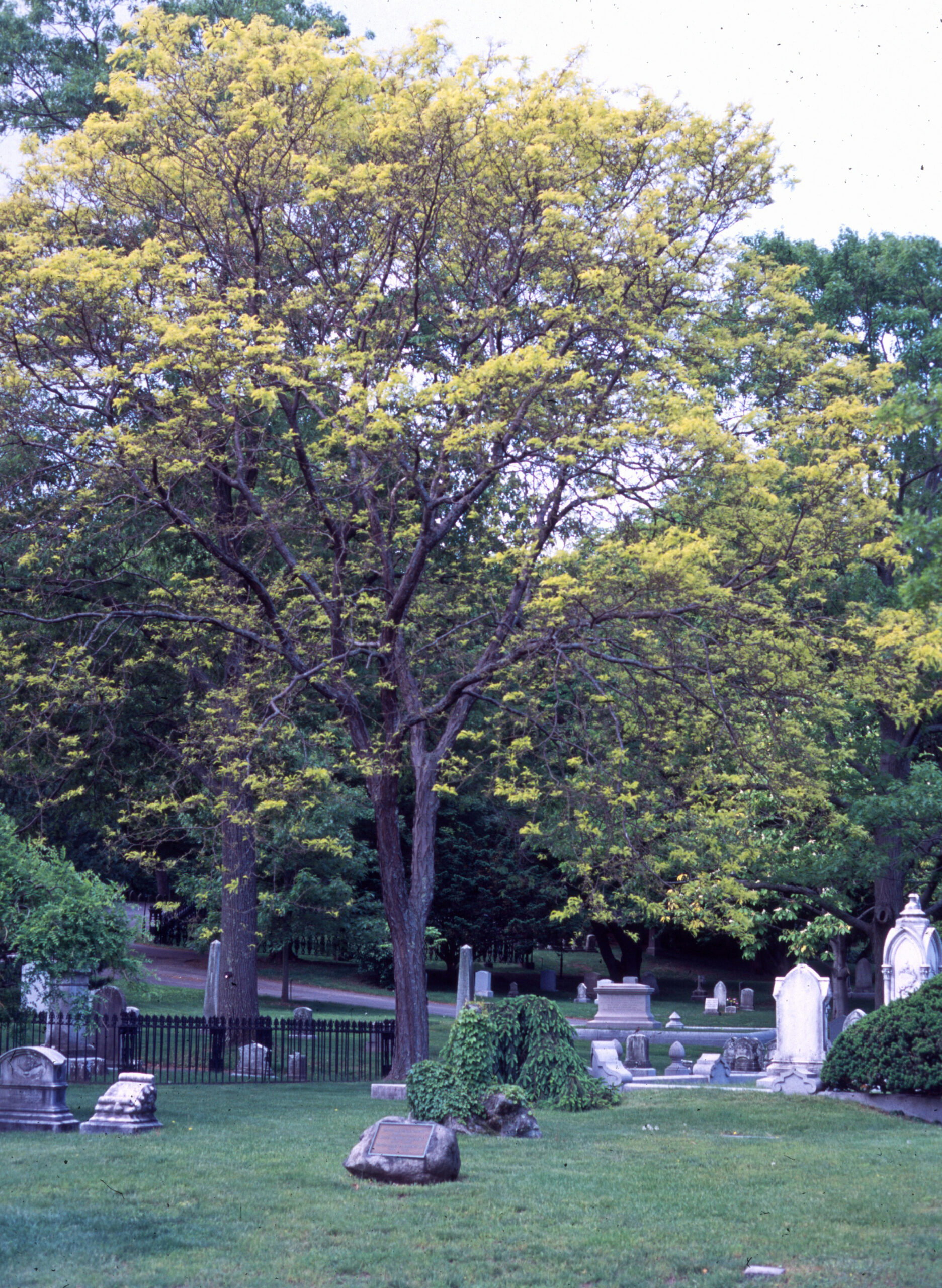
Horticulture Highlight: Columbine
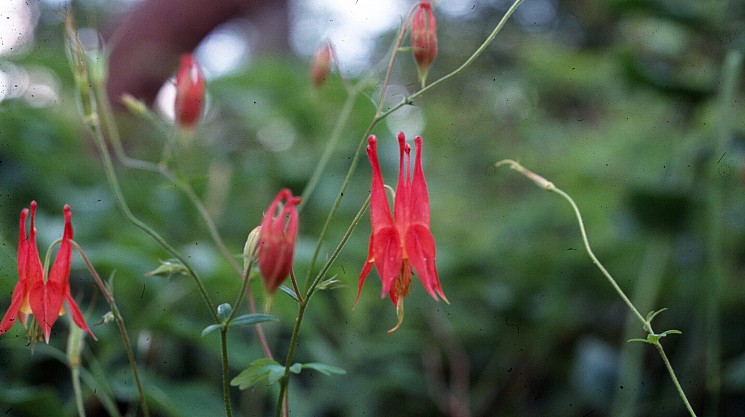
…A woodland walk,
A quest of river grapes, a mocking thrush,
A wild rose or a rock-loving columbine
Salve my wounds…
-Ralph Waldo Emerson
Referred by some as an old-fashioned favorite, Columbine, Aquilegia canadensis provides a curious and beautiful ornamental interest. The genus Aquilegia comprises 60-70 species found throughout the Northern Hemisphere. Aquilegia is within the RANUNCULACEAE, the buttercup family, which also includes the genera Anemone, Helleborus, and Xanthorhiza which we have discussed previously.
(more…)The Flowering Bulbs of Spring
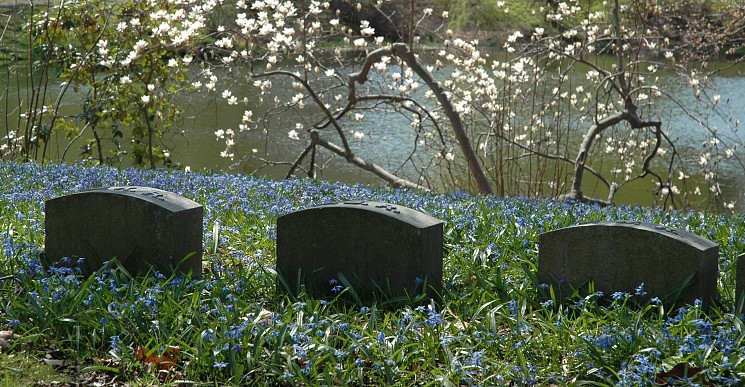
The scientific definition of the beginning of spring occurs with the vernal equinox (March 20). But, locally, we have experienced snowfall on the running of five Boston Marathons (1907, 1908, 1925, 1961, and 1967) and two Boston Red Sox games in Fenway Park were snowed out on April 8th and 10th in 1996. Boston had a half-inch of snow on May 10, 1977. For many of us, the lovely sights of the first flowers opening from bulbs are our own “signs of spring”. Flowering bulbs, corms, and tubers, which are modified perennial, herbaceous plants, are currently coming up in numerous locations, throughout our landscape.
(more…)Ilex opaca – American holly

Love is like the wild rose-briar,
Love is like the wild rose-briar,
Friendship like the holly-tree-
The holly is dark when the rose-briar blooms
But which will bloom most constantly?
The wild-rose briar is sweet in spring,
Its summer blossoms scent the air;
Yet wait till winter comes again
And who will call the wild-briar fair?
Then scorn the silly rose-wreath now
And deck thee with holly’s sheen,
That when December blights thy brow
He still may leave thy garland green.
-Emily Bronte
Many decorations, especially wreaths, include the leaves and fruit of Ilex opaca, American holly. Native to the eastern United States, Ilex opaca may reach 40 to 50 feet tall in its southern range, but in Massachusetts it is more often a smaller tree, 20 to 30 feet tall, with stiff evergreen leaves. The leaves, 1 ½ to 3 ½-inches long, have several sharp spine-like points along the margin. The leaves remain on branches for two to three years before being replaced by newer leaves. The name opaca means opaque or shaded, and refers to the duller sheen of the leaves and fruit compared to the English holly, Ilex aquifolium.
(more…)